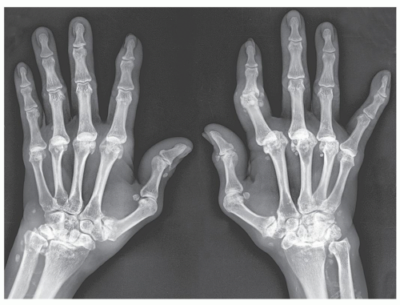Baby, it’s cold outside! When the mercury drops, folks with arthritis swear the chilly temps affect their body in the worse way. Many sufferers try to manage their aches and pains by reaching for pain meds, exercising, making dietary changes, or losing weight but when Old Man Winter arrives, they feel his presence in their joints.
According to the Centers for Disease Control and Prevention, arthritis causes twice as much pain and limitations for Blacks than for whites.
So, when the weather outside is frightful, are arthritis sufferers really affected by the cold? Apparently, tales of arthritis pain as a weather predictor is not an old wives tale after all according to the Arthritis Foundation. A study that was conducted three years and published in BMC Musculoskeletal Disorders, clinicians asked osteoarthritis (OA) sufferers if and how weather influenced their pain. Of the 712 respondents, over 67 percent revealed they were weather-sensitive and experienced more joint pain than their non-weather-sensitive counterparts. A 2015 study published in the Journal of Rheumatology found significant links between older people and humidity, temperatures and joint pain. The scientists concluded that effects of humidity on pain were more intense when temps dropped dramatically.
When it’s cold outside and the pain in your joints is really dialed up, try these arthritis pain-relief tips, after all, they can’t hurt!
- Shed some pounds. A study in Arthritis & Rheumatism of overweight and obese adults with knee osteoarthritis found that losing one pound of weight resulted in four pounds of pressure being removed from the knees. Translation, losing just 10 pounds would relieve 40 pounds of pressure from your knees.
- Let hot water soothe you. Taking a dip in a heated pool is not only a wonderful way to get those joints moving but it soothes them as well. Can’t get to a pool? Try soaking in a warm bath but don’t fly out the house after you do. Allow your body temp to normalize before you head out into the cold. When you immerse your body in water try to gently flex or move aching joints for about 15 to 20 minutes.
- Consider Vitamin D supplementation. Low levels of vitamin D can raise the risk of osteoporosis in the hip and knee. Even though direct sunlight is a good source of the “sunshine vitamin” there are those folks who tend to get less sun exposure. So if you can’t spend some time in the sun speak to your healthcare provider about a safe and effective dose via a vitamin D3 supplement that lasts longer in your body. Make it a goal to incorporate more foods into your diet that are fortified with the vitamin including milk, many breakfast cereals, and some brands of orange juice, yogurt, and soy drinks. It’s also found in fatty fish, such as salmon, tuna, and mackerel.
- Maybe fish oil? According to the Arthritis Foundation, fish oil contains anti-inflammatory chemicals called resolvins, potent analgesics that can aid in relieving joint pain. Speak to your doctor about trying Omega 3’s as they can increase the risk of bruising or bleeding. When purchasing the supplement please be aware that some brands may contain toxic polychlorinated biphenyls (PCBs) or mercury. So look for brands that follow good manufacturing practices.
- Try a massage. Got pain? Get a rubdown! The discomfort you may be feeling is emanating from a joint and the muscles surrounding it. Getting an hour-long massage at least once a week over an eight week period can reduce some forms of arthritic pain according to research published in The Journal of Alternative and Complementary Medicine.
- If you don’t fear needles… Try acupuncture. There are folks who swear by the pain-relieving benefits these minuscule needles have brought to them. When properly administered, acupuncture has been known to decrease discomfort and inflammation in the joints. You just might find this age-old non-traditional treatment to be soothing and relaxing.
- Bundle up! Arthritis can make you feel cold and achy. So when frosty temps hit, the best thing you can do to protect your aching joints is to keep them warm and cozy. Pay special attention to the head, hands, and feet, as the majority of heat is lost from the body’s extremities.
